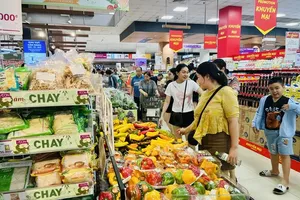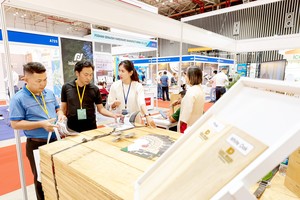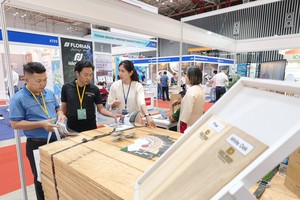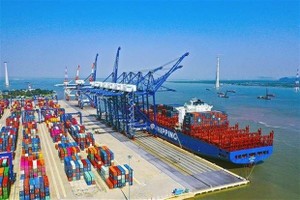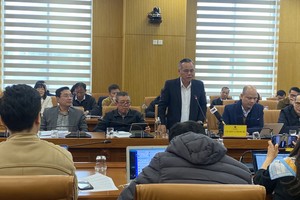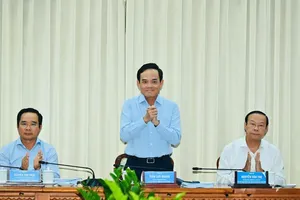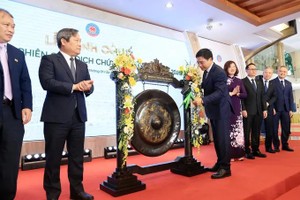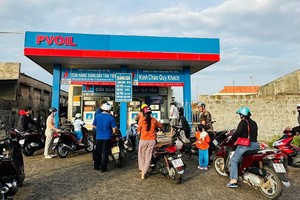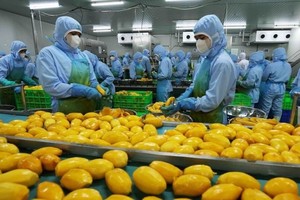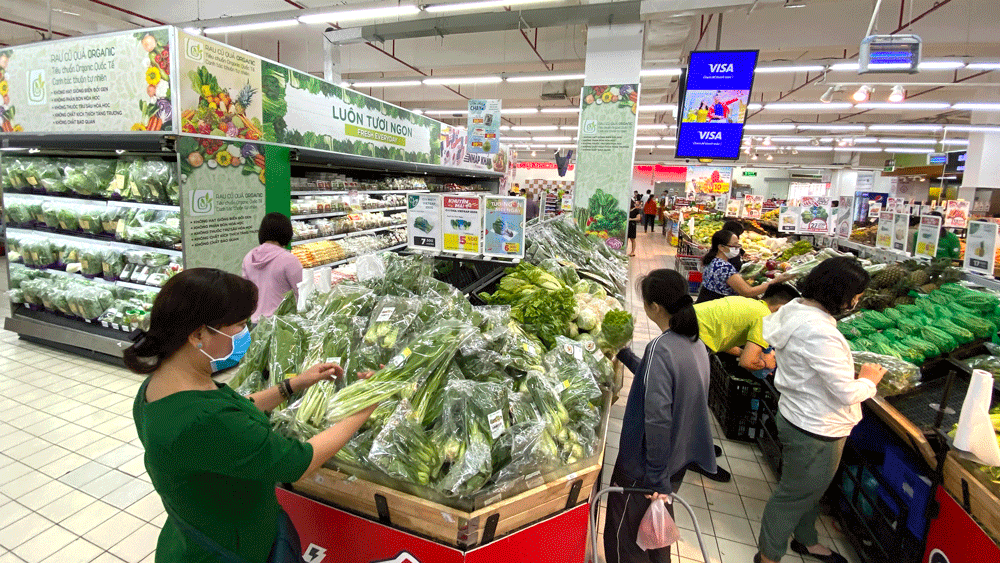
Asanzo is a typical example of the establishment of several associated enterprises to trade with each other to evade taxes then disappear. However, as it has not been punished strictly, this trick has been spreading more and more widely.
A common method of transfer pricing of many multinational companies is to set up a parent company in a country or territory with a low corporate income tax rate, then purchase and sell goods, services and input materials with its subsidiaries in Vietnam with high prices. High input material prices, many enterprises also find ways to increase other expenses, such as advertising and promotional costs to report no profits in Vietnam in order not to pay taxes.
Many foreign direct investment (FDI) enterprises often declare unusually high input costs. For instance, Coca Cola declared that the prices of input flavorings imported from the parent company were higher than those of the domestic beverage companies, and boosted advertising expenses so for nearly 20 years this enterprise has always reported losses. Many FDI enterprises often increase costs by advertising, offering promotions, and taking advantage of this to advertise for the parent company, to spend all profits then they do not have to pay taxes.
Recently, the members of the National Assembly also raised the issue of transfer pricing through the cost price – the initial investment. Particularly, many FDI enterprises carry out transfer pricing by determining high import prices of machinery, equipment, and raw materials and selling them at low prices to report losses. From the beginning, in the economic-technical feasibility study of the project, the enterprise actively increased the input prices of machinery, equipment, technical secret, and inventions to create tremendous value on its fixed assets. Then, during the process of production and business, it continued to replace new machinery and equipment with fictitious prices to increase capital to expand production, creating a virtual value of capital. When the investment value is high, the depreciation will increase, so the cost price is also higher, dragging profits down or even recording no profit. Finally, those enterprises do not have to pay taxes. Most of the big companies made losses or reported poor profits but still expanded investment.
This method of creating virtual investment prices has also been applied by many domestic enterprises through the contracts for the contribution of land use rights but self-pricing at high prices and the contracts of capital contribution by patent rights with extremely high prices to receive high depreciation and reduce profits or make virtual losses.
Another common method of transfer pricing applied by enterprises is to set up many bogus companies to trade with each other, to hide the origin of the fraudulent and counterfeit goods and transfer profits to bogus companies for them to withdraw the money then run away. Asanzo is an example. This company created many bogus associated companies that import electronic equipment and components in order not to pay special consumption tax because according to regulations, only imported completely-built-unit goods must pay the special consumption tax. After that, the bogus companies sell them to Asanzo as completely-built-unit products, so that Asanzo could sell them to the market without paying special consumption tax. However, the actual goods sold to Asanzo are components, not completely-built-unit products, because the tax authorities have proved that Asanzo has a contract to hire a third party to assemble goods for Asanzo.
And to evade corporate income tax, the bogus company sold the “completely-built-unit products” to Asanzo at a high price, almost equal to the selling price of Asanzo on the market. That is why Asanzo had a turnover of VND1.4 trillion but paid only VND50 million of taxes. And at the bogus company, when importing components for VND1 dong, this company sold them to Asanzo at a price four times higher. After the payment was completed, the wife of the CEO of Asanzo returned to the bogus company to withdraw money. The Tax Department of Ho Chi Minh City proved that the total amount withdrawn was VND500 billion. The act of tax evasion of Asanzo was obvious, so the tax authority has transferred the case to the police for investigation and handling.
What makes the public waiting and displeased is that the case of Asanzo has not been handled by authorities. Besides tax evasion, the act of withdrawing cash by the wife of Asanzo’s CEO at the bogus company which is also trading electronic components with Chinese enterprises shows signs of transfer pricing which needs to be punished but until now, no action has been taken.
Similarly, transfer pricing via outsourcing has the same tax evasion tactic. Many parent companies in foreign countries instead of buying products of companies in Vietnam to sell in the global market, bend the law by the method of "outsourcing" with very low processing prices. Raw materials were temporarily imported for re-export, processing prices were extremely cheap, the company increased other expenses so that the business results of these enterprises were not profitable or loss, so that they did not have to pay taxes.
Experts said that transfer pricing and tax evasion activities have reached an alarming level and at first, it is necessary to punish strictly and quickly the acts of transfer pricing and tax evasion. Juridical authorities must take criminal proceedings against the activities of collusive tax evasion timely and effectively and fight against negative actions that delay prosecution.
With FDI enterprises declaring incorrect cost prices, showing signs of tax evasion, it is essential to set the regulations to impose a tax on sales like for individual business households. The tax authority may also impose a tax based on the comparable market transaction price. Authorities must promulgate the sanctioning regulations, concretize the sanctioning methods and fines to create fairness and efficiency in inspection, and at the same time, handle violations and minimize potential negative matters.
A common method of transfer pricing of many multinational companies is to set up a parent company in a country or territory with a low corporate income tax rate, then purchase and sell goods, services and input materials with its subsidiaries in Vietnam with high prices. High input material prices, many enterprises also find ways to increase other expenses, such as advertising and promotional costs to report no profits in Vietnam in order not to pay taxes.
Many foreign direct investment (FDI) enterprises often declare unusually high input costs. For instance, Coca Cola declared that the prices of input flavorings imported from the parent company were higher than those of the domestic beverage companies, and boosted advertising expenses so for nearly 20 years this enterprise has always reported losses. Many FDI enterprises often increase costs by advertising, offering promotions, and taking advantage of this to advertise for the parent company, to spend all profits then they do not have to pay taxes.
Recently, the members of the National Assembly also raised the issue of transfer pricing through the cost price – the initial investment. Particularly, many FDI enterprises carry out transfer pricing by determining high import prices of machinery, equipment, and raw materials and selling them at low prices to report losses. From the beginning, in the economic-technical feasibility study of the project, the enterprise actively increased the input prices of machinery, equipment, technical secret, and inventions to create tremendous value on its fixed assets. Then, during the process of production and business, it continued to replace new machinery and equipment with fictitious prices to increase capital to expand production, creating a virtual value of capital. When the investment value is high, the depreciation will increase, so the cost price is also higher, dragging profits down or even recording no profit. Finally, those enterprises do not have to pay taxes. Most of the big companies made losses or reported poor profits but still expanded investment.
This method of creating virtual investment prices has also been applied by many domestic enterprises through the contracts for the contribution of land use rights but self-pricing at high prices and the contracts of capital contribution by patent rights with extremely high prices to receive high depreciation and reduce profits or make virtual losses.
Another common method of transfer pricing applied by enterprises is to set up many bogus companies to trade with each other, to hide the origin of the fraudulent and counterfeit goods and transfer profits to bogus companies for them to withdraw the money then run away. Asanzo is an example. This company created many bogus associated companies that import electronic equipment and components in order not to pay special consumption tax because according to regulations, only imported completely-built-unit goods must pay the special consumption tax. After that, the bogus companies sell them to Asanzo as completely-built-unit products, so that Asanzo could sell them to the market without paying special consumption tax. However, the actual goods sold to Asanzo are components, not completely-built-unit products, because the tax authorities have proved that Asanzo has a contract to hire a third party to assemble goods for Asanzo.
And to evade corporate income tax, the bogus company sold the “completely-built-unit products” to Asanzo at a high price, almost equal to the selling price of Asanzo on the market. That is why Asanzo had a turnover of VND1.4 trillion but paid only VND50 million of taxes. And at the bogus company, when importing components for VND1 dong, this company sold them to Asanzo at a price four times higher. After the payment was completed, the wife of the CEO of Asanzo returned to the bogus company to withdraw money. The Tax Department of Ho Chi Minh City proved that the total amount withdrawn was VND500 billion. The act of tax evasion of Asanzo was obvious, so the tax authority has transferred the case to the police for investigation and handling.
What makes the public waiting and displeased is that the case of Asanzo has not been handled by authorities. Besides tax evasion, the act of withdrawing cash by the wife of Asanzo’s CEO at the bogus company which is also trading electronic components with Chinese enterprises shows signs of transfer pricing which needs to be punished but until now, no action has been taken.
Similarly, transfer pricing via outsourcing has the same tax evasion tactic. Many parent companies in foreign countries instead of buying products of companies in Vietnam to sell in the global market, bend the law by the method of "outsourcing" with very low processing prices. Raw materials were temporarily imported for re-export, processing prices were extremely cheap, the company increased other expenses so that the business results of these enterprises were not profitable or loss, so that they did not have to pay taxes.
Experts said that transfer pricing and tax evasion activities have reached an alarming level and at first, it is necessary to punish strictly and quickly the acts of transfer pricing and tax evasion. Juridical authorities must take criminal proceedings against the activities of collusive tax evasion timely and effectively and fight against negative actions that delay prosecution.
With FDI enterprises declaring incorrect cost prices, showing signs of tax evasion, it is essential to set the regulations to impose a tax on sales like for individual business households. The tax authority may also impose a tax based on the comparable market transaction price. Authorities must promulgate the sanctioning regulations, concretize the sanctioning methods and fines to create fairness and efficiency in inspection, and at the same time, handle violations and minimize potential negative matters.
